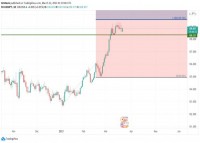|
Opalesque Industry Update - Buy-side companies are being forced to rethink their strategies due to new regulations which have increased the value of collateral in trading and risk management, according to a new report from global investments company BNY Mellon and London-based consultancy The Field Effect. The study, Collateral Management: Navigating the Regulatory Maze, argues that buy-side companies are playing catch up with sell-side businesses, which have more than 25 years’ experience in implementing sophisticated balance sheet driven collateral solutions. Buy-side companies should rethink their business models in relation to risk, capital considerations and collateral management. The global financial crisis has led to a new regulatory landscape which presents collateral opportunities and challenges which many market participants have not assimilated into their strategic plans. The implementation of central clearing arrangements, UCITS V and Basel III requirements, and an increasing need for many market participants to source high quality liquid assets (HQLA), are the top priorities for buy-side companies. The direct and indirect impact of regulations vary significantly across both market segments and individual firms, with institutional size, sophistication (business profile, legal structure, operational maturity) and geographical location the most important differentiators, according to the report. “Collateral is a crucial business driver for most sell-side financial institutions and hedge funds,” said Mark Higgins, co-author of the study and Senior Business Development Manager at BNY Mellon Markets Group. “The introduction of numerous interconnected, and at times conflicting, regulations have resulted in some market players employing a ‘just-in-time’ or ‘self-preservationist’ approach; this is no longer a viable option. Asset managers, insurance companies and pension funds need to develop a comprehensive approach to comply with regulatory changes effectively and deliver more tangible benefits to their clients.” The key collateral trends identified in the paper as specifically driven by regulatory change include: · Increased use of non-cash for certain collateral transactions; · Longer maturity of collateral-related transactions; · Increased demand and use of HQLA assets; · Greater levels of collateral required for use by central counterparties (CCPs); and · Increased complexity of collateral management solutions to ensure enhanced efficiency and ultimately collateral optimisation. “The new and constantly changing regulatory environment presents significant challenges for buy-side companies, which are predominantly in the early stages of implementing improved collateral, risk and balance sheet management solutions,” adds David Field, founder and managing director at The Field Effect. “Collateral is becoming a standalone area of market expertise, with some describing it as a new asset class. As the regulatory maze grows in complexity, service providers will play an increasingly important role in helping realise the opportunities available to players who efficiently manage their collateral positions.” To see the report, Collateral Management: Navigating the Regulatory Maze click here. Article source - Opalesque is not responsible for the content of external internet sites |
Industry Updates
BNY Mellon urges buy-side companies to take comprehensive view of collateral strategy
Wednesday, March 09, 2016
|
|





 RSS
RSS







